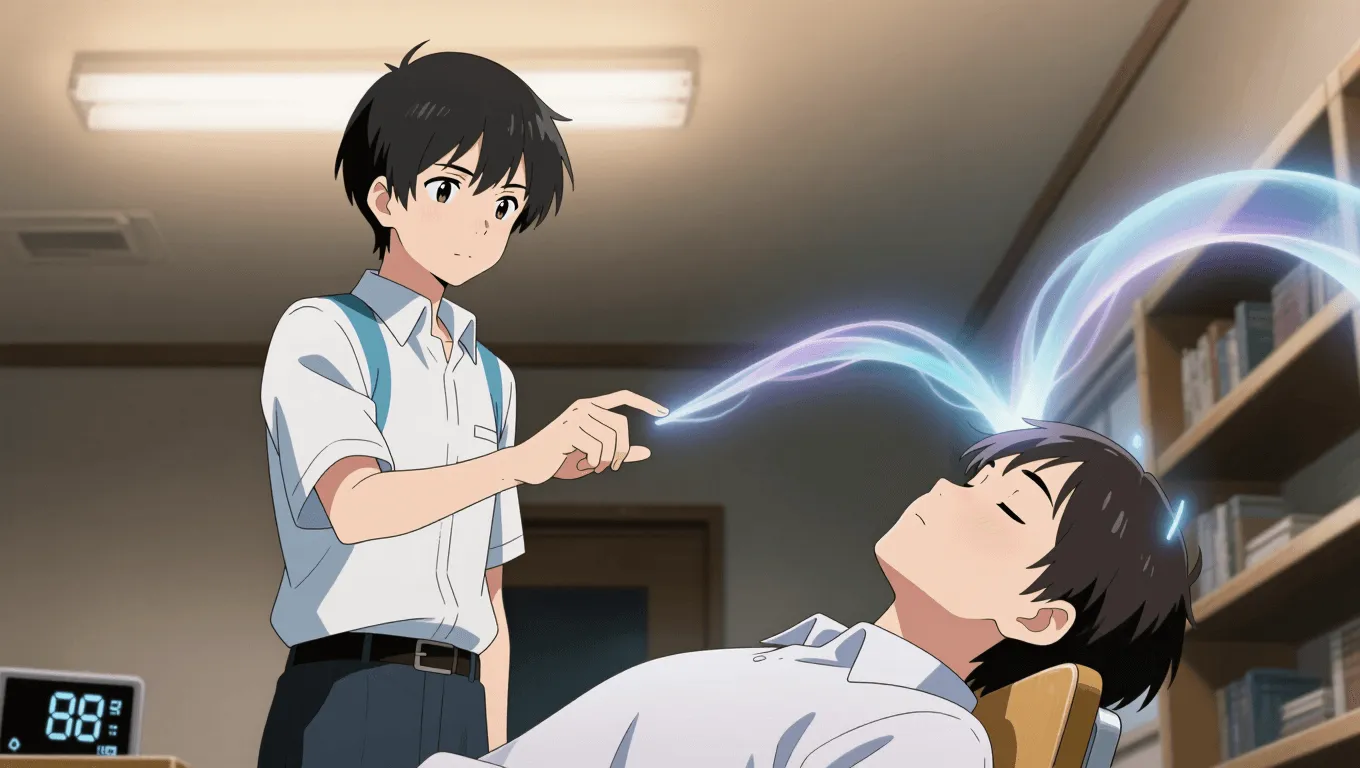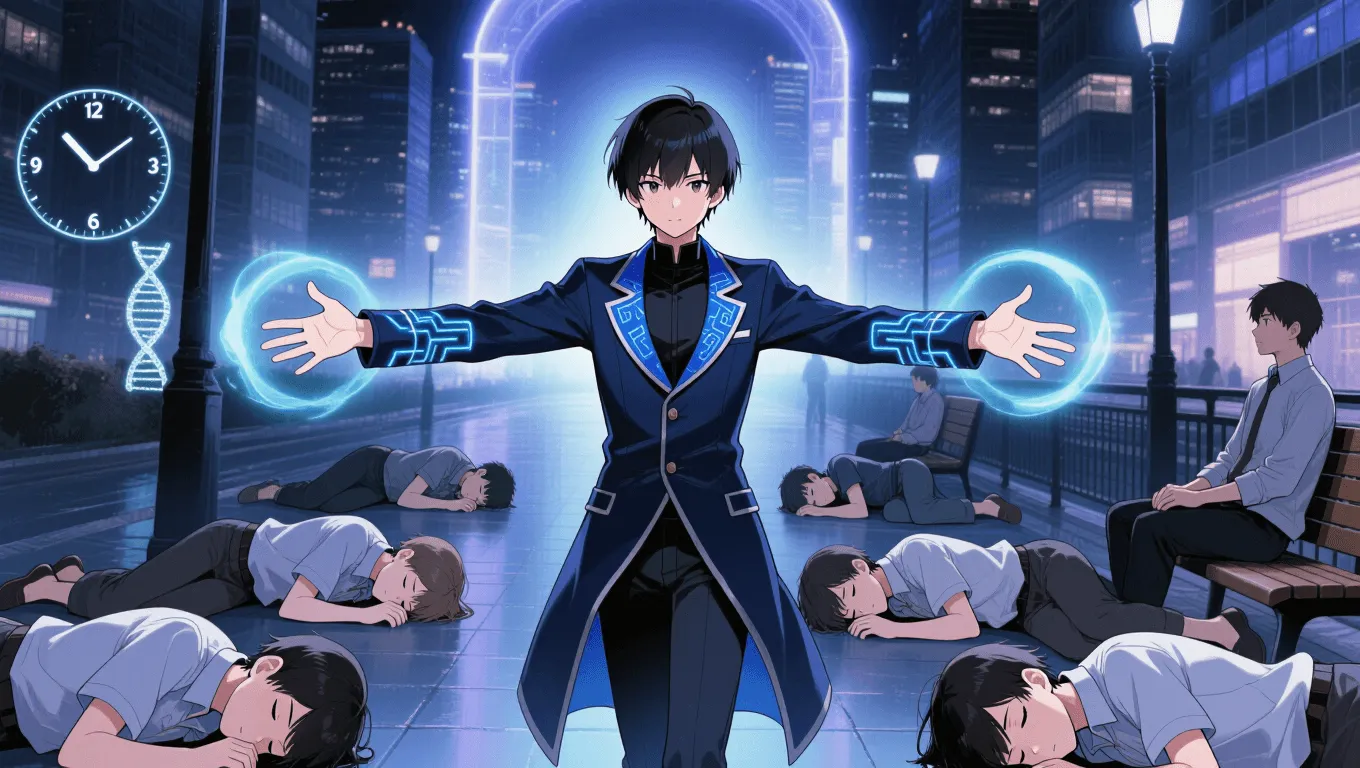Sleep Manipulation | Hypnokinesis

Sleep Manipulation | Hypnokinesis Video Demo 🎬
Table of Contents
- Sleep Manipulation | Hypnokinesis Video Demo 🎬
- What Is Sleep Manipulation | Hypnokinesis
- Core abilities of Sleep Manipulation | Hypnokinesis
- Application / Tactical Advantages in Combat
- Level: Level 1 🏙️, Level 2 🌇, Level 3 🌃
- Limitations of using the Sleep Manipulation | Hypnokinesis
- Weakness against what other superpowers
- Synergistic Power Combos
- Known Users
Sleep Manipulation | Hypnokinesis is the metahuman ability to induce, regulate, and disrupt sleep states in living beings. Wielders can trigger drowsiness, plunge targets into instant slumber, adjust sleep stages like REM and deep sleep, or keep allies alert beyond normal limits. In RPGs and comics, it’s a precise, non-lethal control power that overlaps with sedation, somnolence inducement, and—at advanced tiers—limited dream entry. For more abilities like this, browse the superpower wiki, or discover a random new ability with the random superpower generator.
What Is Sleep Manipulation | Hypnokinesis
Sleep Manipulation | Hypnokinesis governs the biological and neurological mechanisms behind sleep. Rather than seizing full mental control, practitioners modulate arousal levels, circadian rhythms, and neurochemistry (think melatonin, orexin, and GABAergic activity). At base, this creates safe, rapid “lights-out” effects; at higher mastery, the user can tune sleep depth, instill restorative naps, or interrupt sleep cycles to weaken enemies.
It’s distinct from strict mind control: hypnotic suggestion alters behavior while awake, whereas hypnokinesis pushes or holds someone in a sleep state. That said, a skilled user can pair soft suggestion with the onset of sleep, nudging dreams or timing awakenings to gain tactical edge.
Core abilities of Sleep Manipulation | Hypnokinesis
Instant Slumber Induction
The signature technique: a targeted “switch-off” that shunts a foe into safe unconsciousness. Variants include gaze-based knockout, touch-triggered sedation, or a brief settling gesture that radiates soporific waves.
Drowsiness Aura (Somnolence Field)
A localized field that accumulates fatigue in enemies—slowed reactions, heavy limbs, and micro-sleeps. Perfect for crowd control or attrition strategies.
Sleep Stage Control (REM/Non-REM Tuning)
Fine-grained control over stages 1–4 and REM: deepen sleep for healing, suppress REM to reduce nightmares, or provoke REM to open pathways for dream interaction (without full dream editing unless paired with oneiromancy).
Selective Wakefulness (Vigil Enhancement)
Flip the script by delaying fatigue and sharpening alertness in allies. This “anti-sleep” branch staves off exhaustion penalties during long missions.
Sleep Paralysis Inducement and Release
Temporarily decouple motor control from consciousness: hold a target in safe paralysis for capture or gently release a civilian from a panic-inducing episode.
Circadian Rhythm Adjustment
Shift a target’s internal clock forward or backward to mitigate jet lag, prep for night ops, or disorient an enemy squad at a critical hour.
Sleep Sense (Somnometrics)
Perceive who is awake, drowsy, or dreaming through walls. High-tier users can “smell” fatigue, detect stimulant abuse, or track a target by their distinctive sleep signature.
Safe Sedation & Recovery
Apply medically precise sedation for surgery or field treatment, then guide restorative sleep for accelerated recovery. Great for healers and support characters.
Application / Tactical Advantages in Combat
Non-Lethal Takedowns
Hypnokinesis is an elite non-lethal option. Instant knockouts end fights without collateral damage, perfect for stealth infiltrations, hostage rescues, and urban missions.
Area Denial & Crowd Management
A somnolence field reduces enemy coordination. Drowsy foes miscommunicate, fumble reloads, and surrender positions. Combine with terrain to force retreats.
Disruption of Casters and Snipers
Long-channel abilities and precision marksmanship both demand focus and steadiness. Micro-sleep spikes at the wrong second break concentration and ruin shots.
Escape and Evasion
Trigger mass yawns and sluggish reactions to slip out of tight corners. Drop a pursuing squad into staggered naps while allies reposition.
Interrogation & Debrief
Ethically applied post-mission drowsiness softens memory consolidation barriers for cooperative debriefs (never coercive mind control), while guided rest helps witnesses recall details after restorative sleep.
Team Sustain
By delaying fatigue and guiding micro-naps, a hypnokinetic leader can keep a squad combat-effective through long operations without the harmful crash of stimulants.
Level: Level 1 🏙️, Level 2 🌇, Level 3 🌃
Level 1 — Drowsy Initiate
New users can induce light drowsiness in a single target and nudge them into natural sleep with focus and line of sight. Effects are gradual, resisting strong willpower or stimulants. They can also keep an ally alert for a short window. Range is close (a few meters), and maintaining effects requires concentration.

Typical feats
-
Single-target lull to sleep in 10–30 seconds
-
Minor somnolence aura (1–2 meters) causing slowed reactions
-
Brief insomnia suppression for an ally (10–15 minutes)
Level 2 — Somnolent Adept
Power grows in area and precision. Users can drop small groups, toggle REM and deep sleep, handle sleep paralysis gently, and track fatigue signatures through thin obstacles. Selective wakefulness becomes practical for entire teams.

Typical feats
-
Multi-target knockouts (room scale)
-
REM suppression or inducement at will
-
Sleep sense through walls and at mid-range
-
Field sedation for medical procedures
Level 3 — Master of Hypnokinesis
Masters re-script sleep like a conductor: instant, quiet mass slumber; precise circadian edits; and airtight resistance to sleep attacks. They can trigger safe narcoleptic collapse in hardened foes or keep a city block calm during crises. Dream adjacency becomes possible—opening doors for advanced combos with actual dream manipulation allies.

Typical feats
-
Block-wide drowsiness field with opt-in exemptions for allies
-
Split-second sleep induction despite distractions or pain
-
Perfect jet-lag re-timing and shift-work optimization
-
Sleep-paralysis control for capture without harm
Limitations of using the Sleep Manipulation | Hypnokinesis
-
Willpower and Training: Disciplined targets, psionic resistors, or meditative adepts can delay or partially shrug off effects.
-
Biological Constraints: Non-standard neurologies, synthetic beings, and undead may not have sleep cycles to exploit.
-
Line-of-Sight & Proximity: Early users need sightlines; walls and distance degrade precision until mastery.
-
Stimulants and Adrenaline: Combat drugs, heightened adrenaline, or hormonal manipulation can raise arousal and blunt drowsiness.
-
Concentration Costs: Sustained fields divide attention. A startled user may drop control momentarily.
-
Ethical/Legal Boundaries: Non-consensual sedation, even non-lethal, can breach codes of conduct; many teams adopt strict rules of engagement.
-
Overcorrection Risks: Forcing extended wakefulness can cause rebound crashes or cognitive fog in allies if mismanaged.
-
Environmental Interference: Floodlights, sonic alarms, or painful stimuli can yank borderline targets out of induced sleep.
Weakness against what other superpowers
-
Psionic Shielding / Mental Barriers: Telepathic wards, iron will, or psychic armor resist sleep onset.
-
Adrenaline Control / Hormone Manipulation: Spikes in catecholamines push arousal up, countering drowsiness fields.
-
Pain Inducement: Acute pain can forcibly awaken lightly sedated targets.
-
Photokinesis (Intense Light): Sudden bright light suppresses melatonin and disrupts sleep cues.
-
Sound Manipulation / Sonic Alarms: High-decibel bursts or specific frequencies jolt targets awake.
-
Wakefulness Manipulation / Insomnia Inducement: Direct counters that enforce alertness negate basic hypnokinesis.
-
Cybernetic or Robotic Physiology: Beings without biological sleep are effectively immune unless the user can target firmware “sleep modes.”
Synergistic Power Combos
-
Oneiromancy (Dream Manipulation): Put a target to sleep, then an ally edits dreams for intel, therapy, or pacification.
-
Telepathy / Empathy: Telepaths maintain calm, reduce panic, and help the hypnokinetic thread needles between sedation and safety.
-
Sound or Music Manipulation: Lullaby harmonics amplify drowsiness fields and mask operations.
-
Aromakinesis / Pheromone Control: Calming scents or pheromones reinforce biological sleep pathways.
-
Shadow or Darkness Manipulation: Dim environments deepen melatonin cues, synergizing with sleep induction.
-
Chronokinesis (Micro-Pauses): Brief time dilations allow clean application of sleep to fast movers.
-
Healing / Biokinesis: Pair sedation with controlled recovery or surgical precision.
-
Illusion Casting: While foes drift under, illusions misdirect reinforcements and camouflage allies.
Known Users
-
Doctor Destiny (John Dee) — DC villain who weaponizes sleep and dreams via the Materioptikon, illustrating extreme, reality-warping applications.
-
Professor X (Charles Xavier) — Telepath capable of inducing sleep in targets as a non-lethal control measure.
-
Jean Grey — High-level telepath who has repeatedly used mental sedation in the field.
-
Saturn Girl (Imra Ardeen) — Legionnaire telepath known to quiet minds and impose sleep during operations.
-
Somnus (Carl Valentino) — Mutant whose dream-realm abilities showcase advanced sleep-adjacent control.
-
Sandman (Wesley Dodds) — Tech-based user employing sleep gas for stealthy takedowns, a practical example of hypnokinesis achieved through gear.
For more entries and related abilities, continue exploring the superpower wiki or spark ideas using the random superpower generator.
